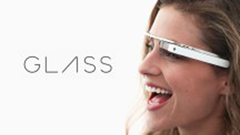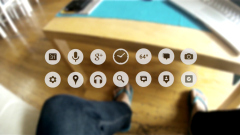Google Glass and The Road Warriors
There is no denying that people are increasingly excited about wearable computing. Smartwatches are the new ‘it’ thing and there is a lot of talk about Samsung entering the wearable computing market with Galaxy Gear, closely followed by Apple’s highly anticipated iWatch.
The Future of the Mobile Workforce
 Smartwatches may be the next step in wearable technology, but it is in the possibilities that Google’s Glass and related technologies present over the next 5+ years that excite me (almost as much as self-driving cars!). What do such technological leaps mean for the mobile workforce of field service technicians, roadside support or boiler repair men?
Smartwatches may be the next step in wearable technology, but it is in the possibilities that Google’s Glass and related technologies present over the next 5+ years that excite me (almost as much as self-driving cars!). What do such technological leaps mean for the mobile workforce of field service technicians, roadside support or boiler repair men?
I can see numerous ways the Road Warrior’s job will be changed by wearable computing in the future. As smart watches become a reality, my mind wanders to what benefits future versions of Google Glass might bring.
Hands free operation
There is a massive benefit of real-time information being available at the technicians’ fingertips (or more correctly eyeballs). With a future version of Google Glass, I can imagine technicians being able to call up detailed user manuals and standard procedures for the equipment they are working on. No more stopping what you are doing to review the laptop screen or paperwork. With Glass, your hands are free to perform tasks while still using external sources for reference.
For a case study in paperless and error-free operations, download by clicking here…
Collaboration and Expertise
 A lone technician might be able to pull down manuals and step-by-step guides, but what if they still don’t understand what needs to be done? Time to call in an expert. Collaborative working would allow remote experts to consult on issues and see what the technician is actually seeing. Such collaboration will deliver more efficient utilization of your remote workforce and significantly improve customer service.
A lone technician might be able to pull down manuals and step-by-step guides, but what if they still don’t understand what needs to be done? Time to call in an expert. Collaborative working would allow remote experts to consult on issues and see what the technician is actually seeing. Such collaboration will deliver more efficient utilization of your remote workforce and significantly improve customer service.
Auto Identification and Data Collection
It is often difficult for mobile technicians to identify the equipment they are working on. Glass could use technology such as Optical Character Recognition to automatically recognize equipment markings. Combine that with Geo-location and the technician can know exactly what they are dealing with, seeing the full work history and other specifics. You can imagine a quick swivel of the head around a room or yard would identify equipment identification, along with their relative locations. Such features would feed beautiful clean data to your back-end systems and deliver the confidence of knowing where your entire stock of equipment actually is, as opposed to where you think it is.
Augmented Reality – the Killer Feature
 All these benefits may pale into insignificance when you consider the possibilities of combining Glass with augmented reality. The car manufacturer Audi recently released an app (iTunes) that uses augmented reality to guide customers through basic tasks. If such features were available to the average field technician, then there would be no need to reference step-by-step guides in any form, or even to call experts.
All these benefits may pale into insignificance when you consider the possibilities of combining Glass with augmented reality. The car manufacturer Audi recently released an app (iTunes) that uses augmented reality to guide customers through basic tasks. If such features were available to the average field technician, then there would be no need to reference step-by-step guides in any form, or even to call experts.
Wearable computing will guide the Road Warrior in the future, pointing them in the right direction to solve customer problems. As with Smartphones today, it will be the ingenuity and design skills of the app developers that will make the biggest difference.
Interested in industrial apps for smartphones? Click here…
All images credit of Gadget Tech.